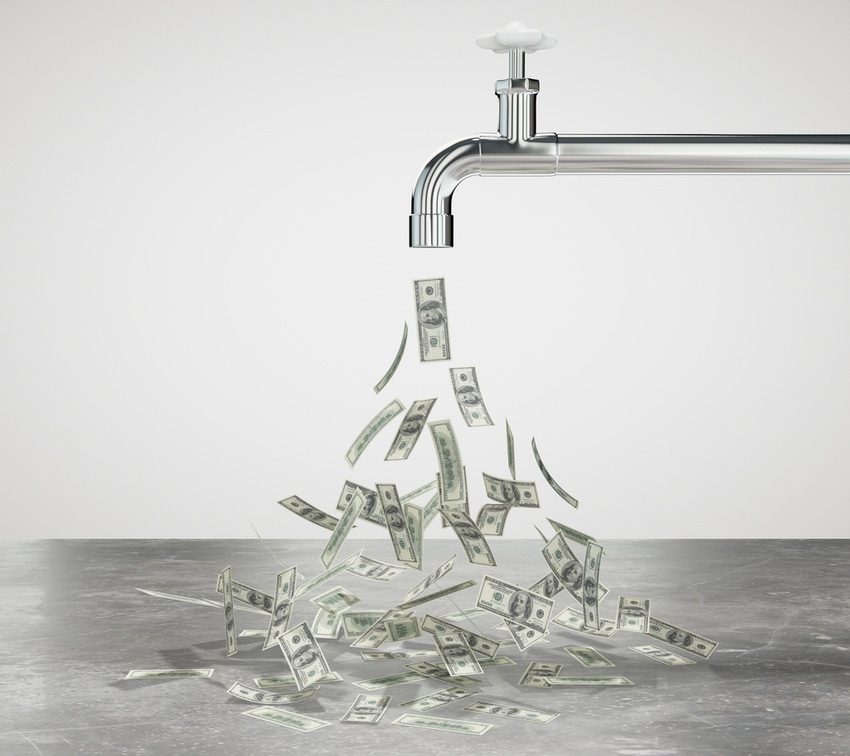How Communication Service Providers Can Stop Revenue Leakage
Automated billing platforms and real-time reporting create billing transparency.
June 8, 2020

By Evan Rice

Evan Rice
With technology convergence meeting increased customer demand, many communications service providers (CSPs) are seeing a wave of unprecedented growth. New lines of business for CSPs can create an opportunity for recurring revenue streams. That’s why it’s important to talk about how to stop revenue leakage.
There is an industrywide shift taking place, with less emphasis on IT value-added services and more on subscription-based revenue models for leveraging emerging technologies like IoT and cloud communications services. Reflecting the size of this opportunity, some reports show that the unified communications-as-a-service (UCaaS) market will be worth nearly $80 billion by 2024. This presents a golden chance for scale, but only if CSPs are able to capitalize on the opportunity.
All works out well when providers are able to expand their customer base and convert one-time services into recurring revenue. But sometimes industry growth doesn’t equate to growth of a CSP’s bottom line. Revenue leakage isn’t a new concept but is relevant to understand as a risk. A significant volume and breadth of data sources, driven by sophisticated billing models, mean many internal finance departments will lack the resources and processes to ensure accurate monthly billing of their clients. Drip by drip, these CSPs have leaking bottom lines, despite significant growth opportunities in the market.
The Issue at Hand
Many providers struggle to pinpoint the specific source and total amount of their business’s revenue leakage. Ultimately, this lack of insight affects many companies and even has the potential to impact enterprise-level operations.
One consideration that adds to the complexity of revenue leakage analysis and management is the evolving nature of the unified communications industry. Change is a constant in this space, from the different types of services that customers prefer, to changes in technology driving new tech adoption, to variations in the status of client subscriptions. All of these variables, if not actively managed, can cause a provider’s bottom line to suffer.
Another key driver of revenue leakage is reliance on manual processes. Human error from data entry into spreadsheets or inefficient legacy systems can routinely leak revenue without a provider even knowing. Couple this with accelerating sales growth, and accurately billing customers becomes too cumbersome a task for many billing departments. In turn, this lack of management oversight affects scalability and hampers all of the great things CSPs are doing in other parts of their business. Legacy systems don’t fare much better, lacking the sophistication needed to analyze growing data sets. This makes forecasting revenue nearly impossible, which can handicap efforts to get new services to market.
Automation Is Key
Many growing providers that use outdated systems or manual processes lose money on every transaction and fail to account for special circumstances involving overages or discounts. With constant consolidation and emerging technologies being adopted by end-users, manual billing and legacy systems simply won’t cut it. Factor in the increased demand to improve revenue and maintain scale, and revenue leakage can devastate a business’s outlook.
To solve revenue leakage problems, CSPs can turn to automated billing platforms, which help ensure they are able to keep pace with rapid industry changes. Having both the software and processes in place to accurately capture usage and subscription-based billing helps mitigate future issues in this area. As unified communications becomes increasingly complex, the need for this level of automation response multiplies.
Modern platforms can integrate directly with other tools to cut down on problematic inefficiencies. Real-time reporting will create transparency for billing processes and eliminate unnecessary back and forth regarding the accuracy of service invoices. If CSPs don’t switch over to these automated processes now, they will fall farther behind the industry’s innovation curve. By using a proactive approach and the power of automation, CSPs can stop sinking dollars down the drain.
Evan Rice is executive vice president of sales and marketing at Rev.io. He previously held sales and marketing positions at VMware and Cbeyond. Follow Rice on Twitter @rev_io_hq or on LinkedIn.
You May Also Like
